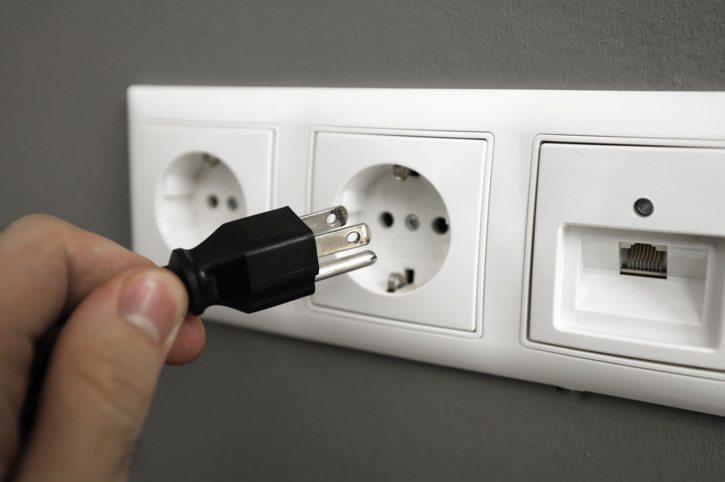How to Use North American Electronics in France
When packing, consider whether or not to replace your electronic items. If you choose to bring them with you, you’ll need a series of transformers and adapters to make them work in France, and you’ll always run the risk of overloading your appliances’ electrical circuits. As many of us have learned the hard way, all transformers are not created equally.
Electricity in Europe comes through the wires at 220 volts, double the amount of power that surges through standard U.S. and Canadian lines. In order to whittle the energy down to something your appliances can handle, you’ll need a heavy-duty step-up/step-down transformer. This is not the kind you’ll find in most travel shops—those are designed for appliances like electric razors and coffee makers—and should not be confused with the little adapters you’ll be able to use to plug in your laptop, cell-phone charger, and camera-battery charger. A transformer is a solid, square, brick-size metal box that converts those 220 volts into 120. This is generally considered safe for things like televisions, DVD players, and small kitchen appliances.

Regional standards may also affect your decision on whether or not to pack your U.S.-configured electronics. You won’t be able to play French DVDs in your American DVD player, for instance; you’ll need a PAL (Phase Alternating Line)-compatible DVD player, which costs less than €50 new at electronics specialty stores like Darty, to watch all those straight-to-video releases.
Most new laptops come equipped with a DVD drive, making it easy to watch any old video, provided you’ve switched the region settings to the European standard. The only tricky part is that most computers have restrictions on how many times you can make this regional switch; five is the norm.
The big news for film fans is that Netflix came to France in 2014. After a long battle with pay-TV networks like Canal Plus, who didn’t want the competition in their cozy marketplace, it’s all systems go for the online video company. Now you indulge in day-long video marathons from your Parisian living room, just like you used to back home.
If you’ve packed your PlayStation to play games and run Blu-ray Discs, be aware that there are three disc-playing zones—A, B, and C—and the European standard is Zone B. When renting or buying Blu-ray Discs, look for Zone A on the back of the box; changing the region settings on your machine isn’t possible, so anything other than Zone A discs will be unreadable.
Considering that you’ll need one of those bulky, expensive transformers to run most American electronic gadgets, on top of having to futz with regional codes and standards, it really makes more sense to sell your electronic goods before you leave and replace them with European versions once you get here, especially if you plan to live here for any length of time.
If you are particularly attached to your lamps, it is possible to convert them to the French standard by purchasing a European standard plug (and 220-volt light bulb to match), available at just about every quincaillerie (hardware store) in the country. If you’re feeling DIY-ish, you can easily splice this new plug onto your existing electrical cord and, if you end up returning stateside, repeat the conversion process by splicing a 110-volt plug on the end when you get back home.